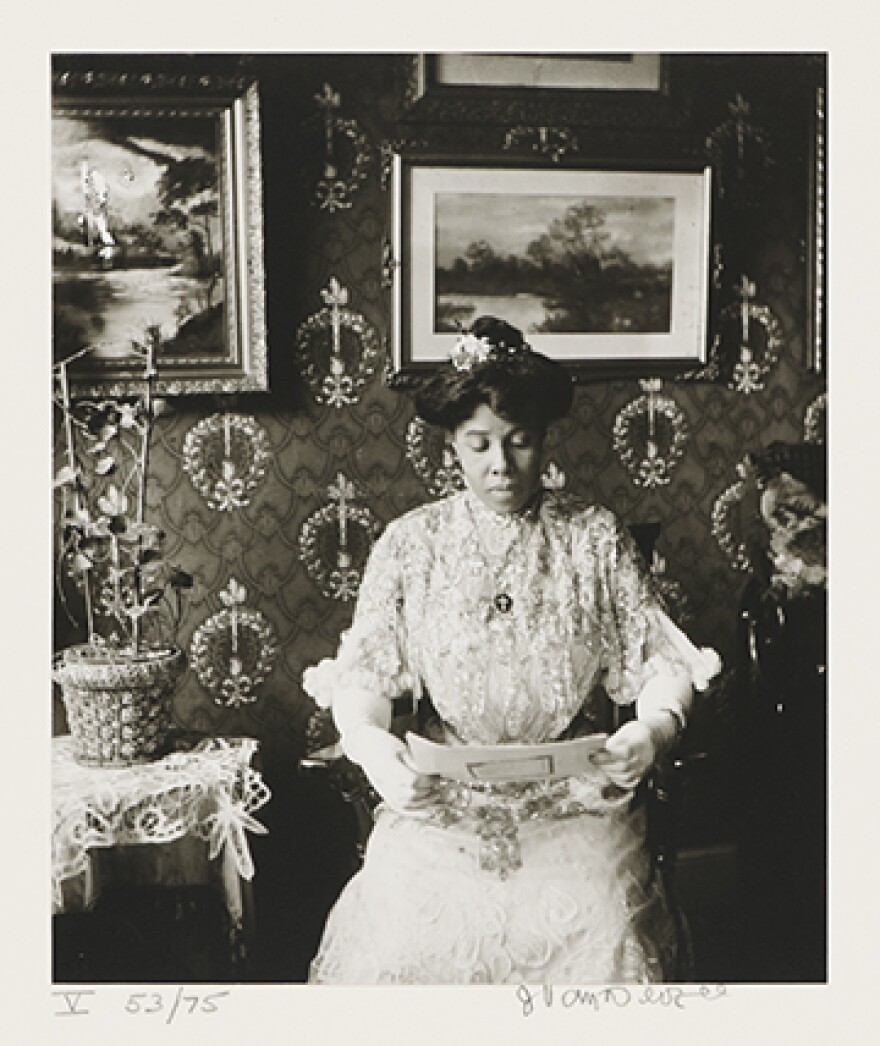Photographer and MacArthur FellowDawoud Bey has a connection with Harlem, New York. His parents met there, he spent a lot of time there as a kid, and even though he’s lived in Chicago for the past 20 years — he still comes back to visit. But within those two decades, Bey has watched the neighborhood change. He says the culture that made Harlem, Harlem has started to disappear.
The Kalamazoo Institute of Arts has three photo exhibitsabout Harlem on display — two by Bey and one by the man who inspired him, James Van Der Zee. There will be a public tour of the galleries Sunday, February 18th at 2 p.m. and in March, Bey will be at the KIA for a talk.

Bey says back in the 1920s and 30s, Van Der Zee was just the neighborhood photographer. He was paid to capture posed shots of people at special occasions.
But when his work was put in a museum, Bey says the public got to see African Americans in a way that wasn’t represented in the early 20th century.
“The formality of the photographs and something about the sense of self possession that one has when they’re posing for the camera,” said Bey.
Bey ended up meeting Van Der Zee and they became friends. When he passed away, Bey was asked to be a pallbearer at his funeral.
Shortly after seeing Van Der Zee's exhibit, Bey set out to do something similar. Just like Van Der Zee, he says he wanted to capture the people of Harlem in an honest way. He also wanted to record the neighborhood’s rich culture.
It’s safe to say his 1979 photo series “Harlem, USA” did just that. You see kids laughing as they pose outside a mom-and-pop restaurant. A man standing proudly in his barbershop. Older women dressed up waiting for a parade. Bey calls his ability to capture personalities “interiority.”

“To make photographs that are not about the surface of the person, but to suggest something of the rich interior life of the individual,” he said.
Now — about four decades later — Bey says, a lot of those local shops are gone. They’ve been replaced by big box stores as Harlem has started to gentrify.
Bey says he wanted to capture that change in his exhibit “Harlem Redux.”
Unlike “Harlem, USA,” “Harlem Redux” focuses more on the landscape than people. Construction is in almost every frame. One of the most thought-provoking photos in the exhibit is of a man facing a construction wall with a sign that says “No Entry.”

“He was sitting in a community in a place that was once familiar to him that is literally disappearing or transforming around him,” Bey explained.
In another photo, white tourists line up outside Abyssinian Baptist Church on a Sunday.
“So people are coming to these churches not necessarily to worship or participate in a church service, but to see what to them might feel like a performance. A performance of an ‘authentic black gospel church service,’” said Bey.
Bey says revitalization is when change takes place for the benefit of the people that already live in a community. He says Harlem, on the other hand, is being gentrified.
“They’re changes that are being put in place for people who will be living there when those changes are in full effect,” he said.

Bey says his next exhibit — set to open in July — is a re-imagining of the Underground Railroad in Ohio. Bey got a MacArthur genius grant to work on it last year. He says some of the photos are of specific places along the Underground Railroad.
“Other photographs are really about evoking a sense of the landscape that fugitive slaves were moving through,” he said.
Until then, you can see Dawoud Bey’s exhibits “Harlem, USA” and “Harlem Redux” — as well as some of James Van Der Zee’s work — at the Kalamazoo Institute of Arts through April 11th.



